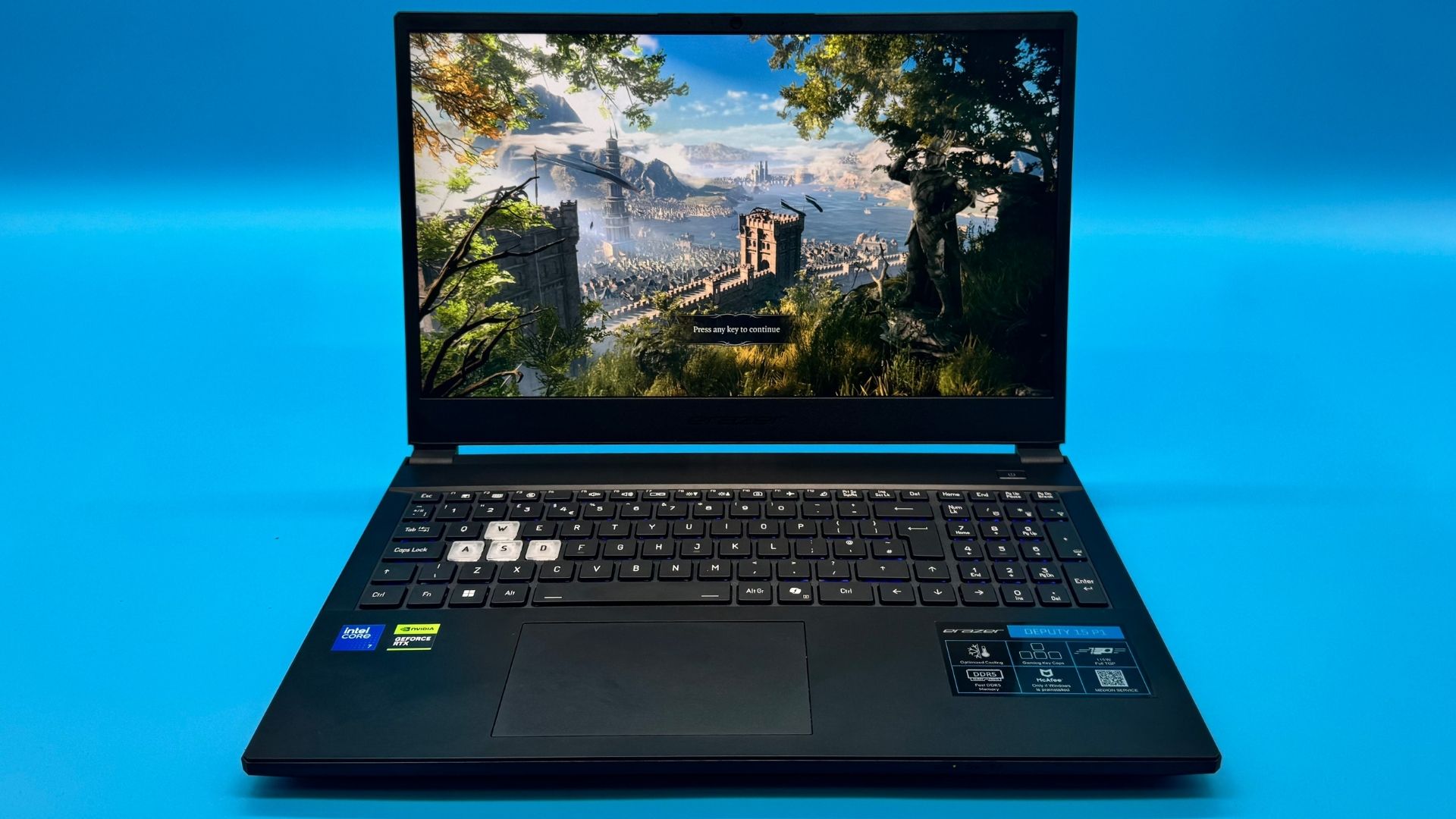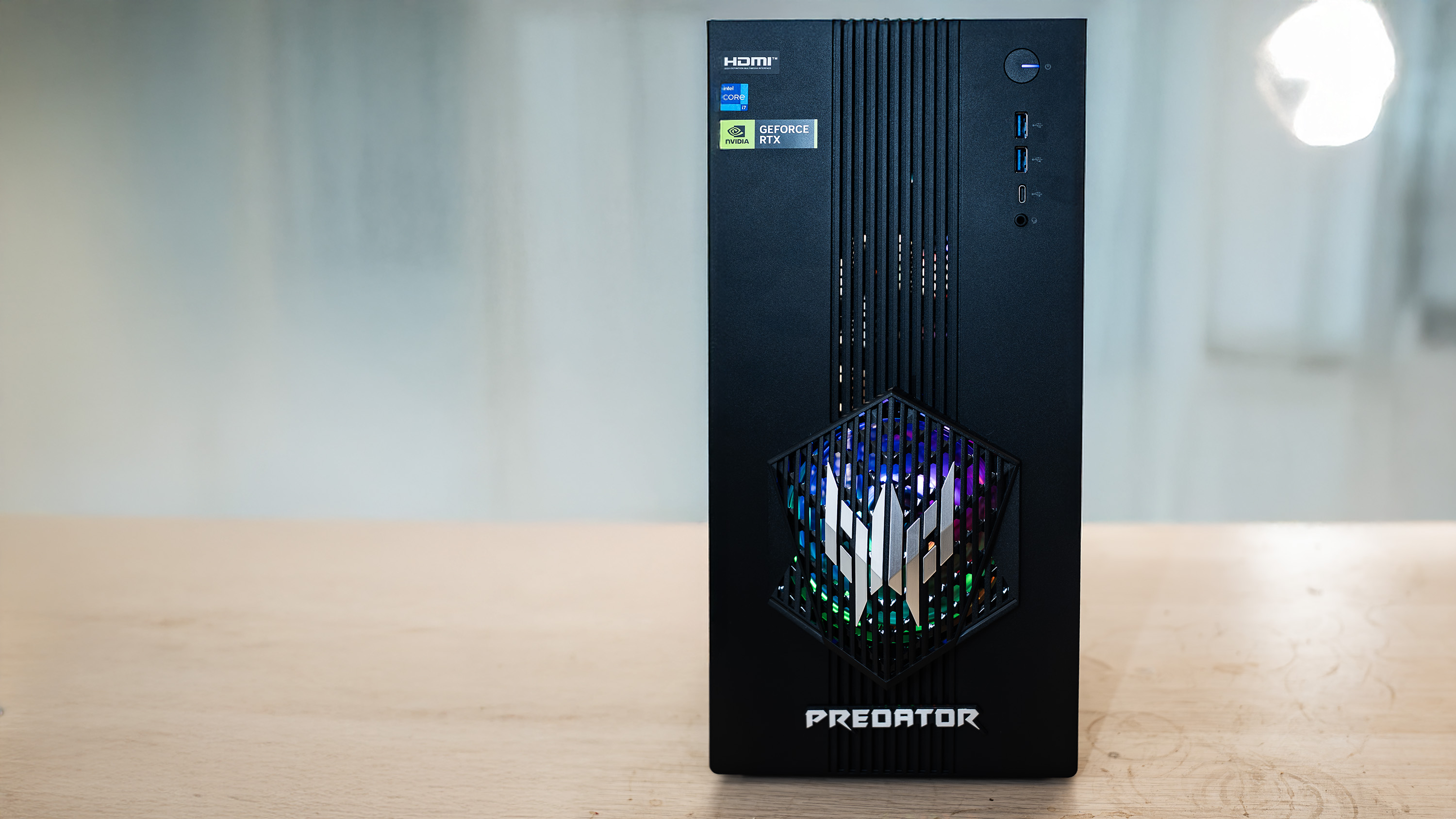Our Verdict
A perfectly reasonable mobile device for playing games on, that is dampened somewhat by a budget feel and inaccurate battery specs.
For
- Very reasonable price
- Decently specced
- Great for 1080p gaming
Against
- Feels budget
- Dull screen
- Poor battery life
PC Gamer's got your back
Almost everything about the Medion Erazer Deputy 15 P1 is as I would expect it to be, and given its pretty budget price, that's not a bad thing. Most of its individual parts are just fine, not landing in a place I'd call good but not dropping down to bad. This is kind of part of what you expect when you pay for a cheaper gaming laptop.
Importantly, you get an Intel Core i7 250H CPU, paired with an RTX 5060, and for a price that undercuts many other RTX 5060 laptops. The Erazer Deputy needs to balance things just right. Not too much to ramp up costs; not too little to make it underwhelming for the money. As of right now, it all feels reasonable to me. Since monitoring its cost, I've seen this little Medion lappy go down a full £150, making it even better.
Even for its low price, the Deputy earns you access to an RTX 50-series GPU. Even with its very light improvement over the previous generation in terms of the actual hardware, Multi Frame Generation on the RTX 5060 is impressive. It's easy to overdo (especially with 4x MFG in some games), but moving from my Lenovo Legion RTX 3070, there's a noticeable uplift in performance, and one I'd be happy with should it be my money on the table.
If this laptop were placed in front of me, I think I could guess the price point pretty quickly. There's nothing wrong with a budget laptop feeling like a budget laptop, but it's definitely noticeable on the Deputy.
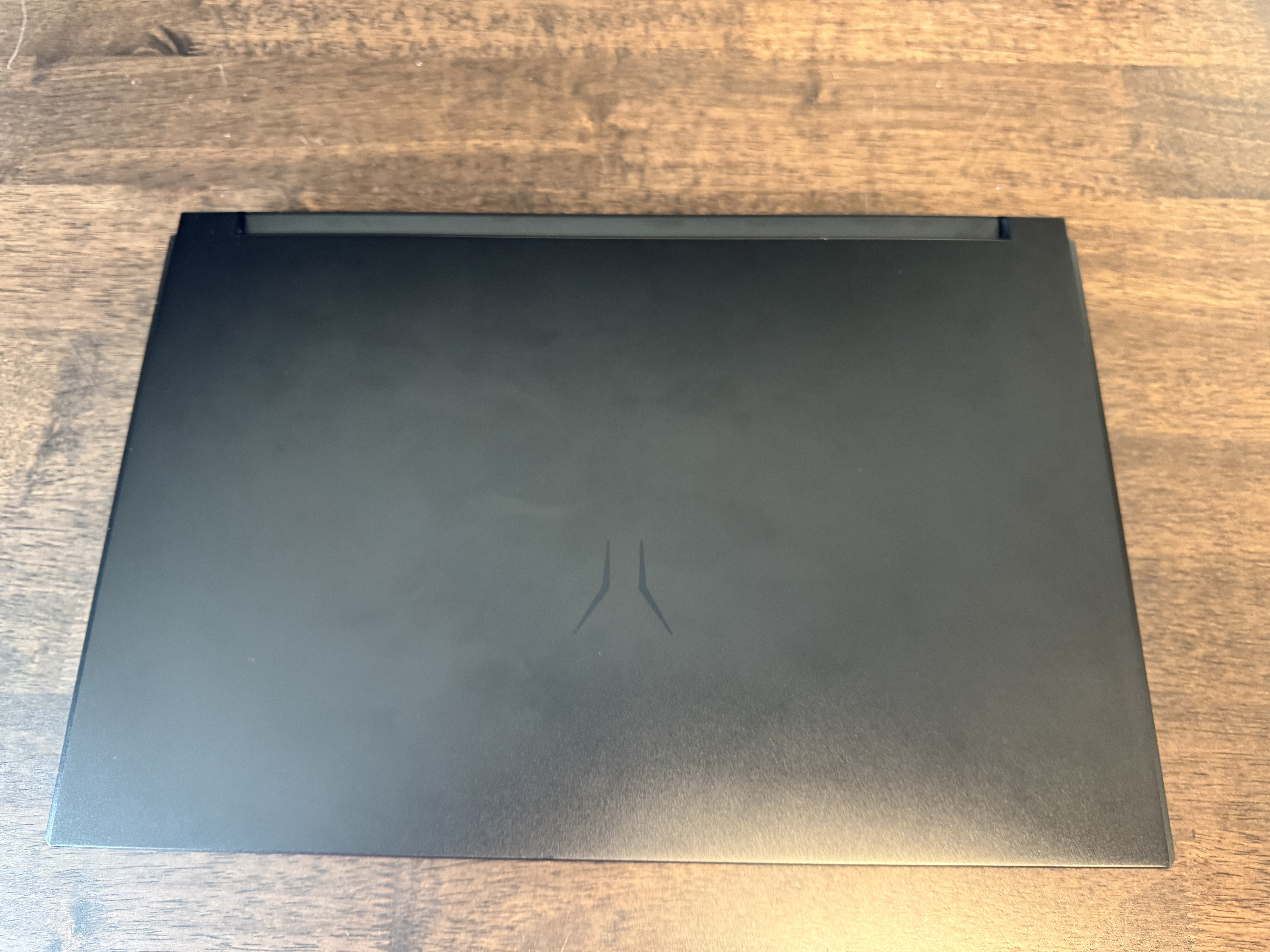
Model no: 30039887
CPU: Intel Core 7 250H
GPU: RTX 5060 (115W)
RAM: 16 GB DDR5 (Max 32 GB)
Storage: 1 TB
Screen size: 15-inch
Refresh rate: 144 Hz
Resolution: 1920 x 1080
IO: 1 x USB 3.2 Gen1 Type-A, 1 x USB 3.2 Gen2 Type-A, 1 x USB 2.0 Type-A, 1 USB 3.2 Gen2 Type-C, HDMI, Mini DisplayPort
Battery: 51.6 Wh
Dimensions: 361 x 25.8 x 247 mm
Weight: 2.25 kg
Price: £1,200 | not available in the US
The screen is mediocre. While it is serviceable in the likes of Black Myth Wukong and Genshin Impact during testing, it's a tad dull all-round. It's uninteresting to look at. On the plus side, it doesn't lack clarity, even for its 1080p resolution and 15-inch size. The 144 Hz refresh rate is useful, especially when paired with the rather decent hardware. A 60 Hz refresh rate could be a bit of a bottleneck, especially when playing older games or using MFG technology.
The Gigabyte G6X is a good point of comparison for the 15 P1. They both come in at a similar price point and are very much budget-oriented. Where the 2024 Gigabyte model has an RTX 4060, the Medion one has an RTX 5060. Gigabyte's is a bit bigger and packed with more memory, but they weigh around the same. If I were picking between the two, I would go for the Deputy for the bump that the 50-series offers, but Gigabyte is likely to give its budget models an RTX 50-series refresh at some point.
When you open up the laptop, the keyboard looks noticeably like a gaming one. It's underlit by RGB lighting, and the WASD keys are made of a transparent material. This makes those keys specifically easier to find in the dark, which is a nice touch. It's a 104-key keyboard, complete with a numpad and F keys, though it does feel a tad cramped.
Keep up to date with the most important stories and the best deals, as picked by the PC Gamer team.
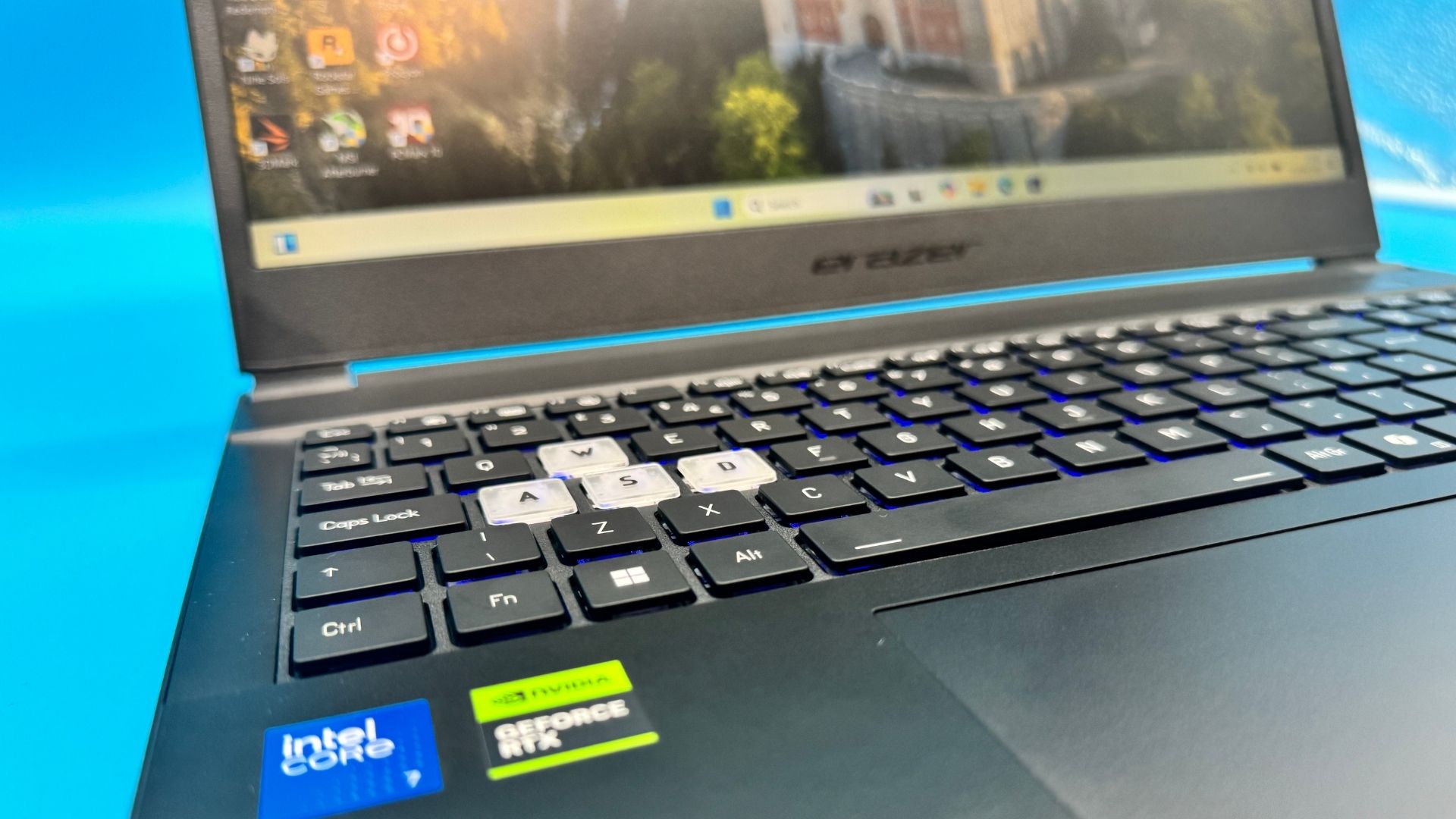
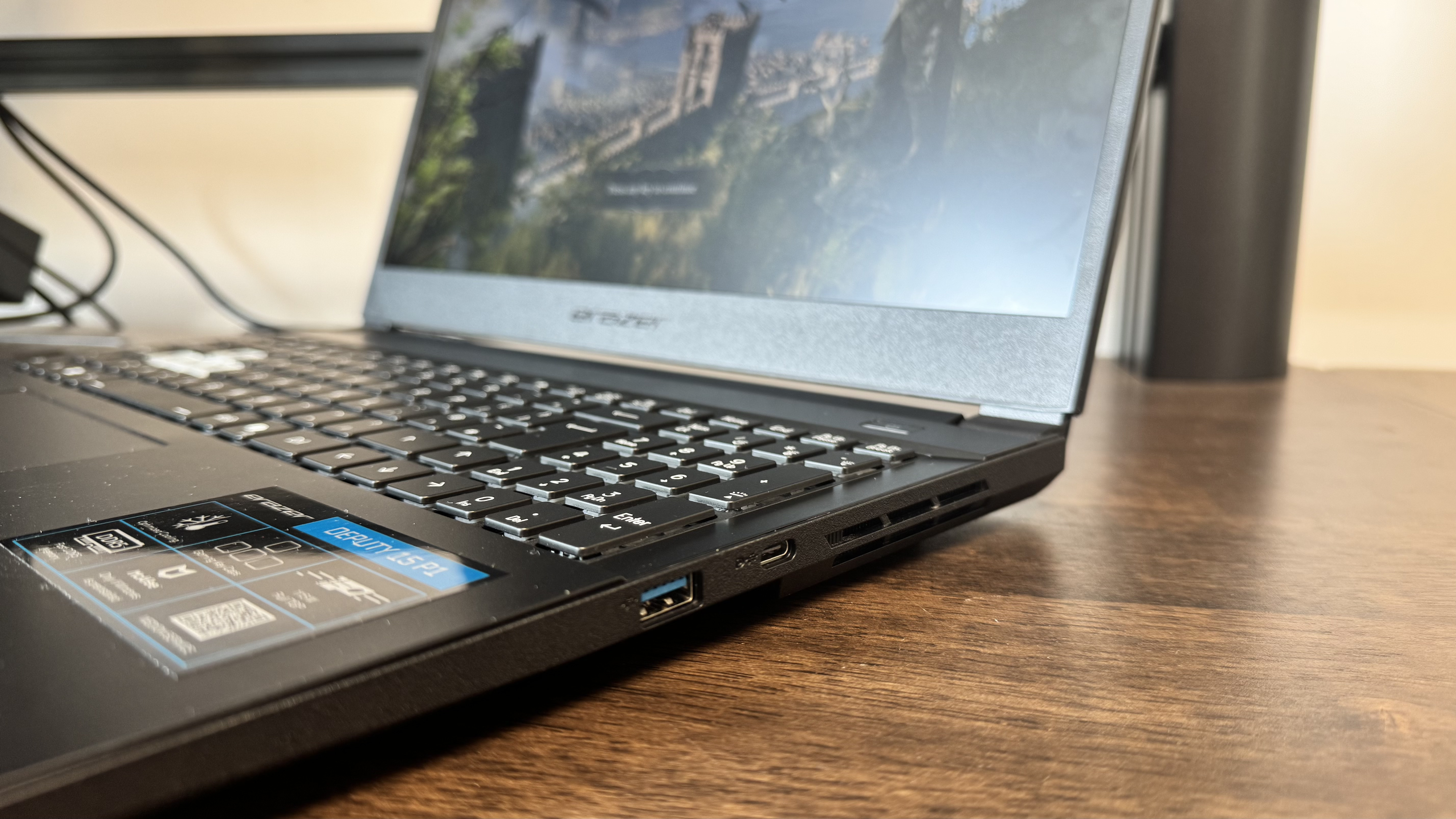
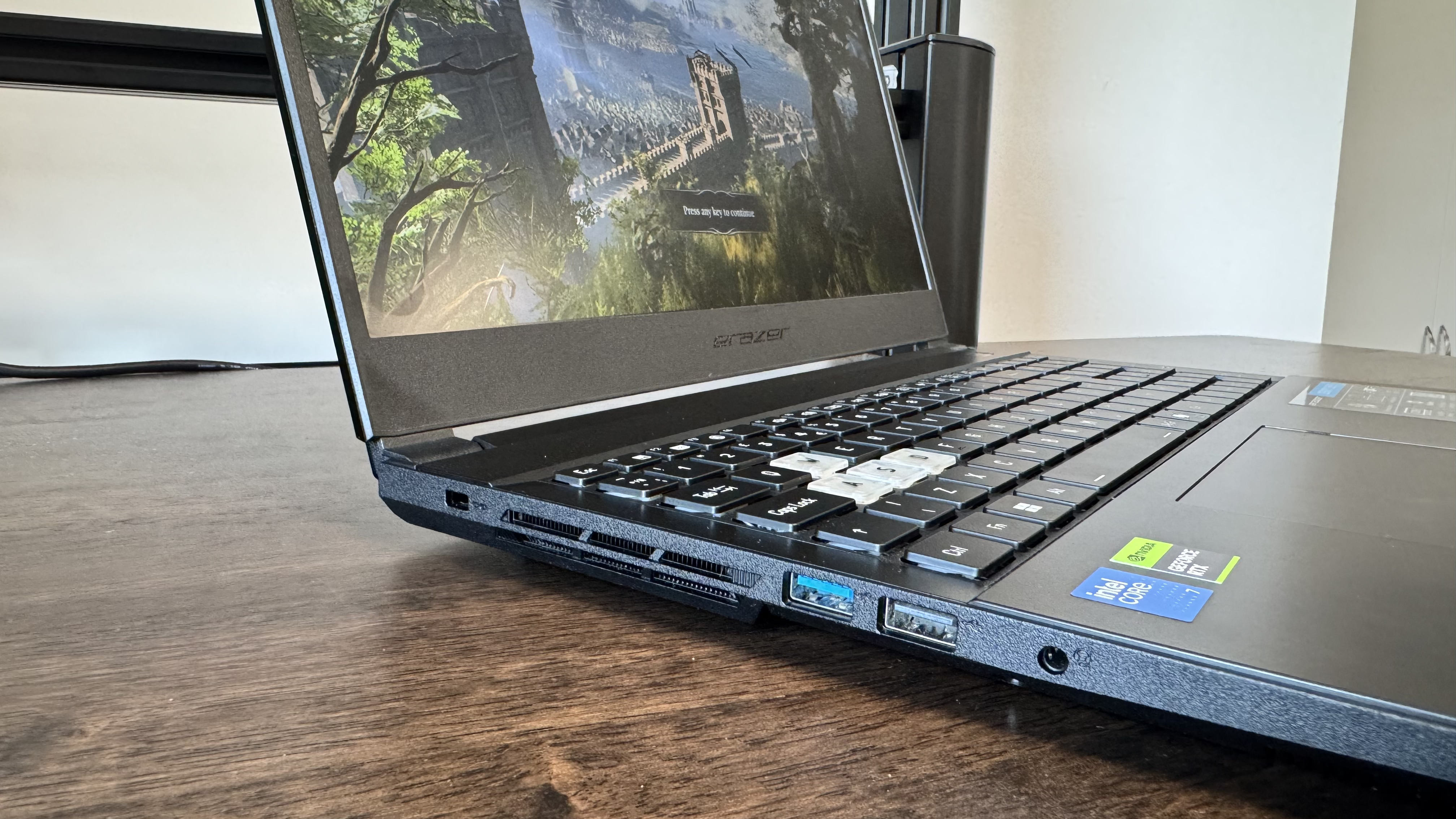
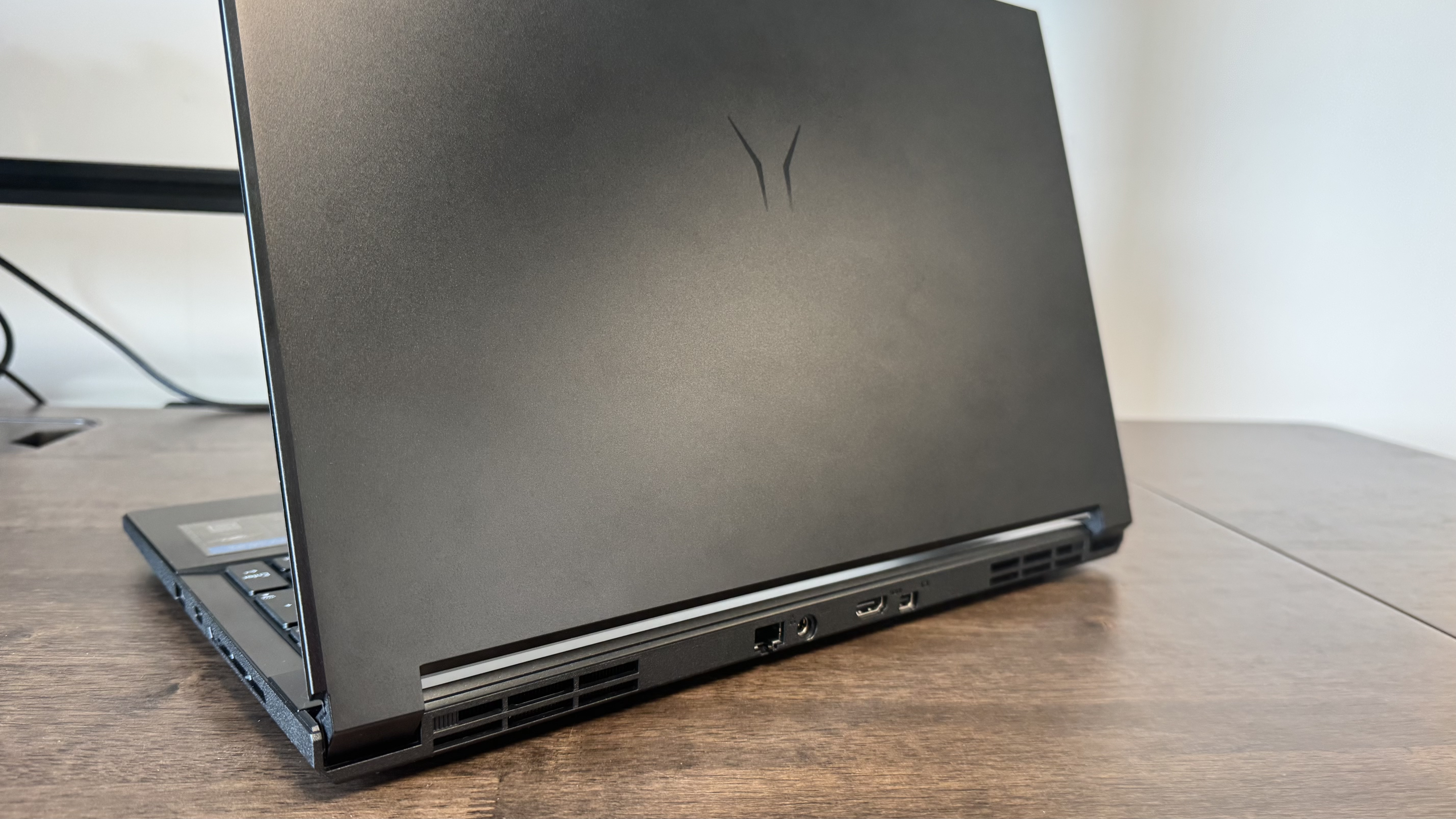
Comparing the Deputy 15's keyboard to the Gigabyte G6X, it has less flex, but it also feels worse to type on. The materials in the body feel stronger, but the keys are not only quite packed in (which often caused typos), but everything feels a bit mushy. When you need a clear and distinct click in shooters, I didn't trust the hardware to deliver it.
The space bar and enter key specifically feel like they take a little too long to reset, leaving me unsure whether I've hit them or not. In the heat of battle, I don't want to have to check my keyboard as I'm playing. I wouldn't call the keyboard bad per se, and I certainly started to get used to it, but it's not to my tastes and definitely feels budget.
The IO is decent. On the left-hand side, it has one audio jack, one USB 2.0 Type-A, and one USB 3.2 Gen1 Type-A. On the right-hand side, it has a USB 3.2 Gen 2 Type-C and a USB 3.2 Gen2 Type-A port. Finally, on the back, it has the charging port, ethernet port, Mini DisplayPort 1.4, and HDMI.
Performance is solid across the board in my testing. In Cyberpunk 2077, it offers comparable performance to the Asus TUF A14 and the MSI Crosshair HX. The former device sits a few hundred dollars above the Medion, and the latter is over a thousand dollars more expensive. Figures were reliably better than the Ryzen AI Max+ 390 led Asus ROG Flow Z13 (as one might imagine with those specs), but naturally sat behind RTX 5070 and onward devices that we've tested.
The Raptor Lake Intel Core 7 250H proved to be a little underwhelming in CPU-intensive games like Baldur's Gate 3. With 14 cores and 20 threads, this CPU has six Performance-cores and a max boost clock of 5.4 GHz. Though I got slightly better performance in 3DMark Port Royal than the Ryzen AI 7 350 in the TUF A14, the CPU performance in Time Spy is significantly worse. As has commonly been the case as of late, Ryzen CPUs outpace Intel in gaming tests.
Temperatures never proved to be a bother, with the max CPU temperature landing at 93 degrees Celsius and the max GPU temperature coming in at 80 degrees Celsius. Importantly, unlike the RTX 3070 Lenovo Legion I've been using for some time, that heat never really managed to spread to the keyboard, so I could happily game for long hours with it. Well, I could game for hours while plugged in.
I did notice that, despite having a balanced and performance mode, I'd never actually opt to put it in performance mode if this were my daily driver. In this mode, the CPU spikes its power consumption at the cost of some GPU power, and in tests, I found balanced mode to not only be significantly less loud and less hot, but actually tended to perform better too.
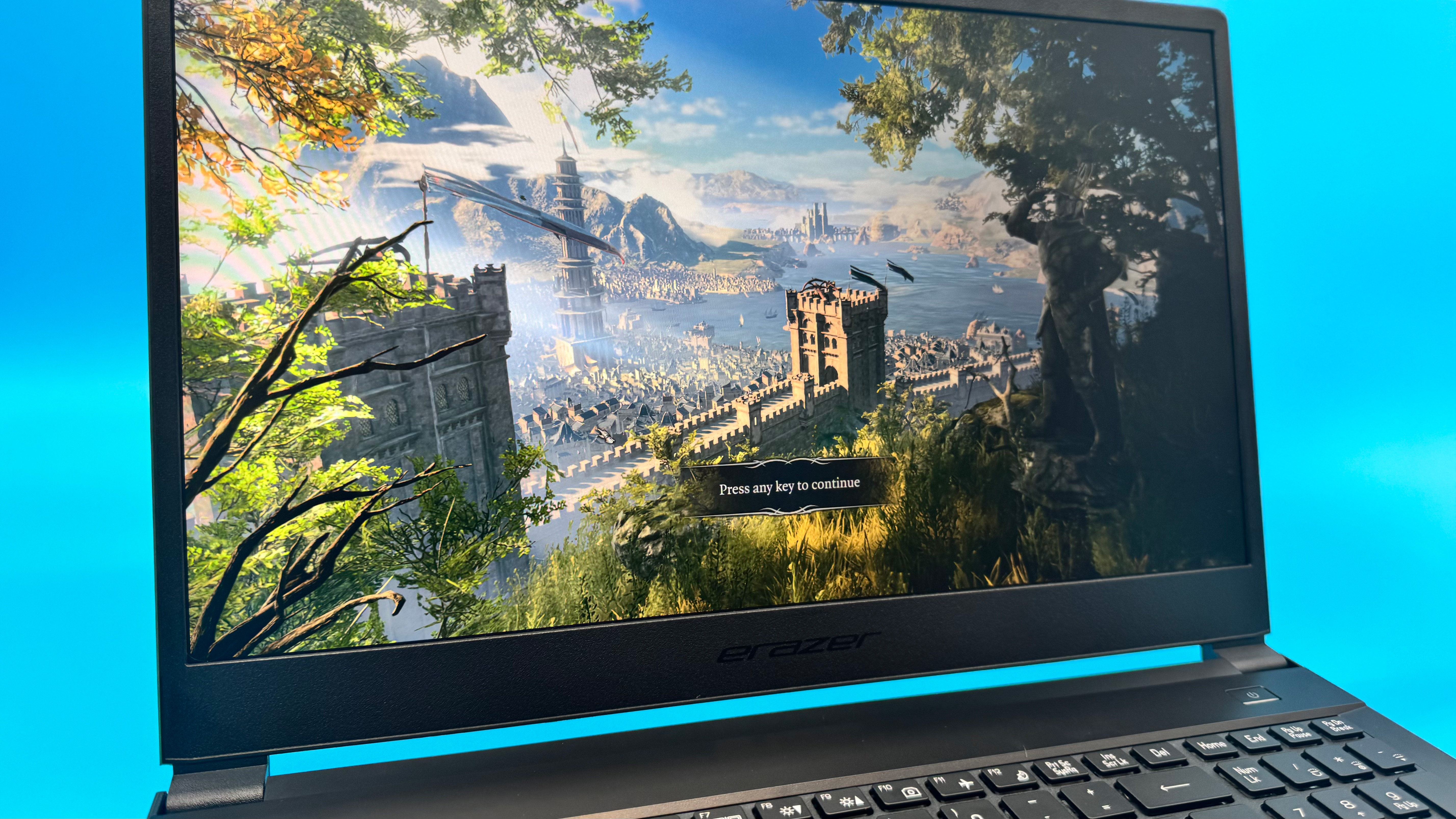
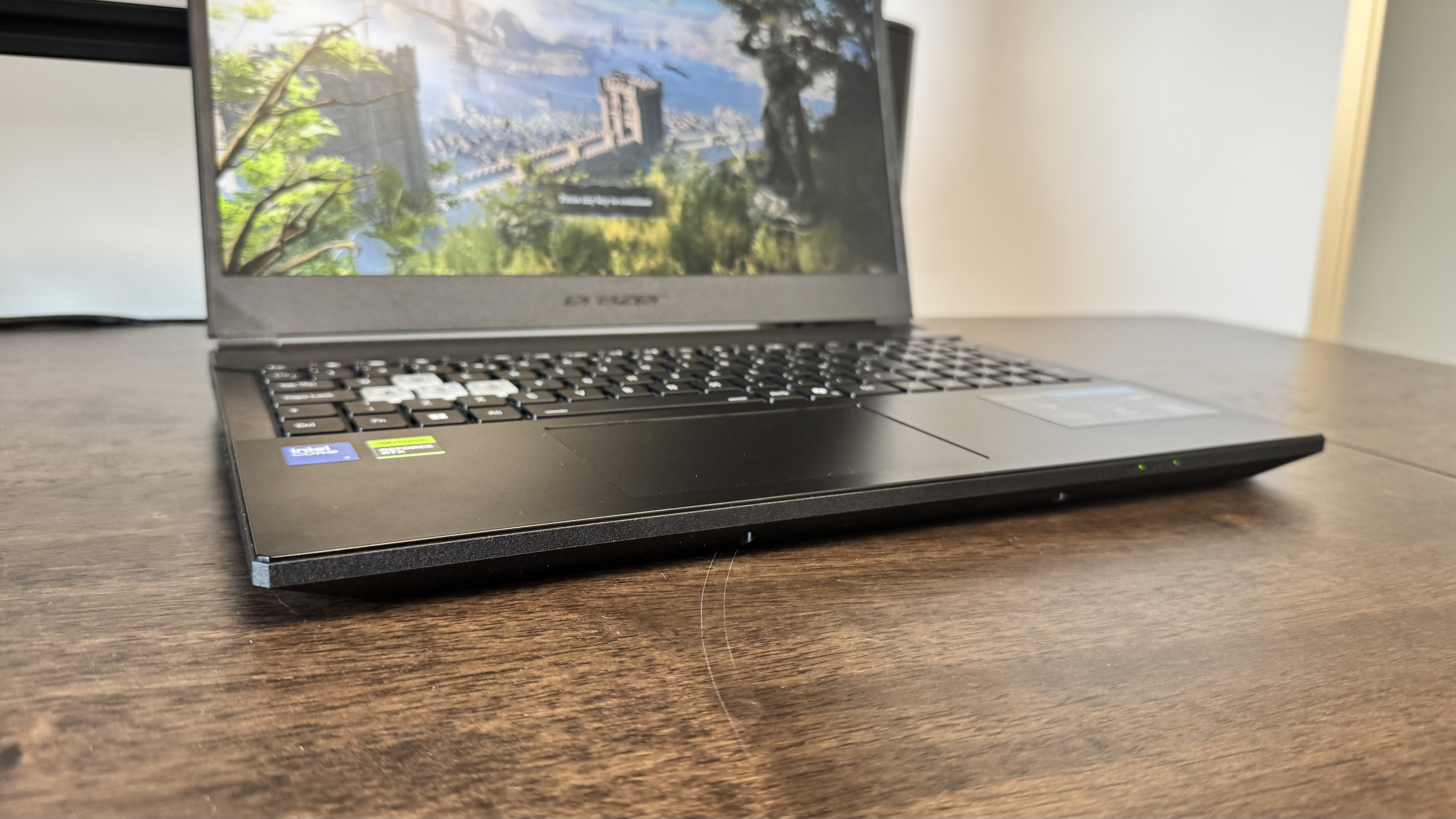
I got three fps better averages in Cyberpunk 2077 in exchange for three fps lower 1% lows in performance mode. With upscaling on in Cyberpunk 2077, I measured both the average and 1% low being lower in performance mode. Scores in 3DMark Port Royal are lower in performance mode, and 3DMark Time Spy Extreme slightly better.
I also kept forgetting how to change performance and balanced mode, as the software does not bear any Medion branding, and typing Medion into the search bar doesn't find it. You instead have to type in 'Control Centre'. What did manage to constantly pop up, though, was an alert asking me to get a McAfee subscription. As little bloatware as possible is definitely my preference here, and that pop-up was fairly annoying before I removed it entirely.
Nvidia's Blackwell range of GPUs adds a small performance bump over the previous generation, plus advanced MFG, but in laptops, they have resulted in a much better battery life. They smartly pull back on power when it's not needed, and give it a boost when required. This means those looking for an RTX 5060 could reasonably bring it along to a cafe—something out of the question for most gaming laptops prior.
A whopping 99 Wh battery (as claimed by some retailers) means that it should go on for ages. Well, that's just not true from testing it. 56 minutes is how long it lasted. Looking at PCMark, I found it suggested I only tested from 94% so I thought a retest was in order. This time, 62 minutes.
I found the answer to this mystery after cracking the laptop open. The battery in my review model is actually a relatively tiny 51.6 Wh. This is the lowest capacity of any gaming laptop we've tested in 2025, and definitely not the 99 Wh battery advertised incorrectly by some.
With that in mind, about an hour of charge while gaming isn't horrible, and is a testament to the software and performance handshakes between the CPU and GPU, but there will be some who have purchased this laptop with that promised battery capacity and not received it.
I reached out to Medion as to what happened here, and it turns out that the spec sheet given to retailers has the proper information on the left-hand side and example stats on the right-hand side. Some appear to have taken the right column and popped those in as the laptop's stats.
Unfortunately, even if a potential buyer were savvy enough to realise this budget laptop probably didn't have a whopping 99 Wh battery from the size and budget, they might not get the proper information on the Medion site.
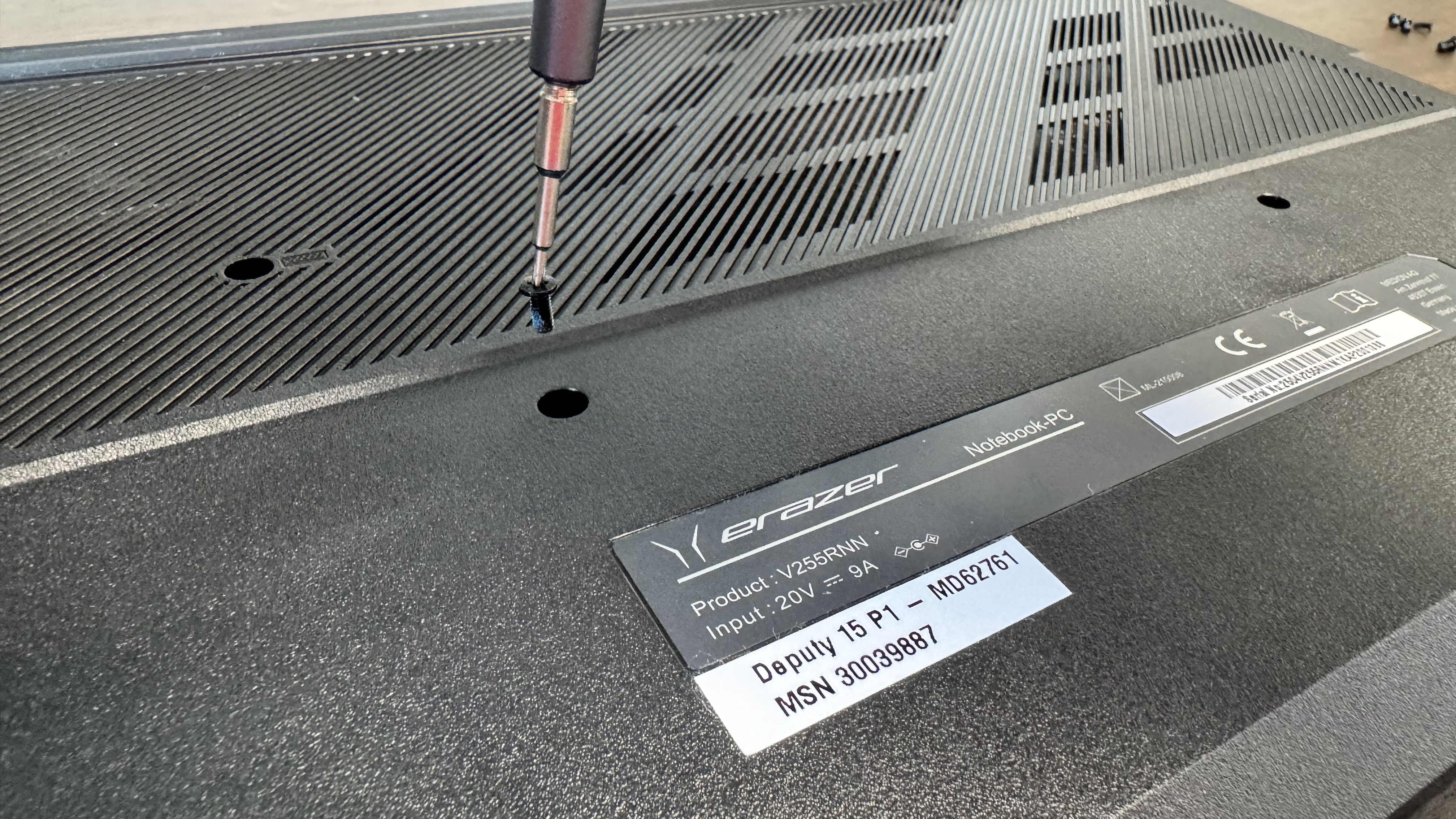
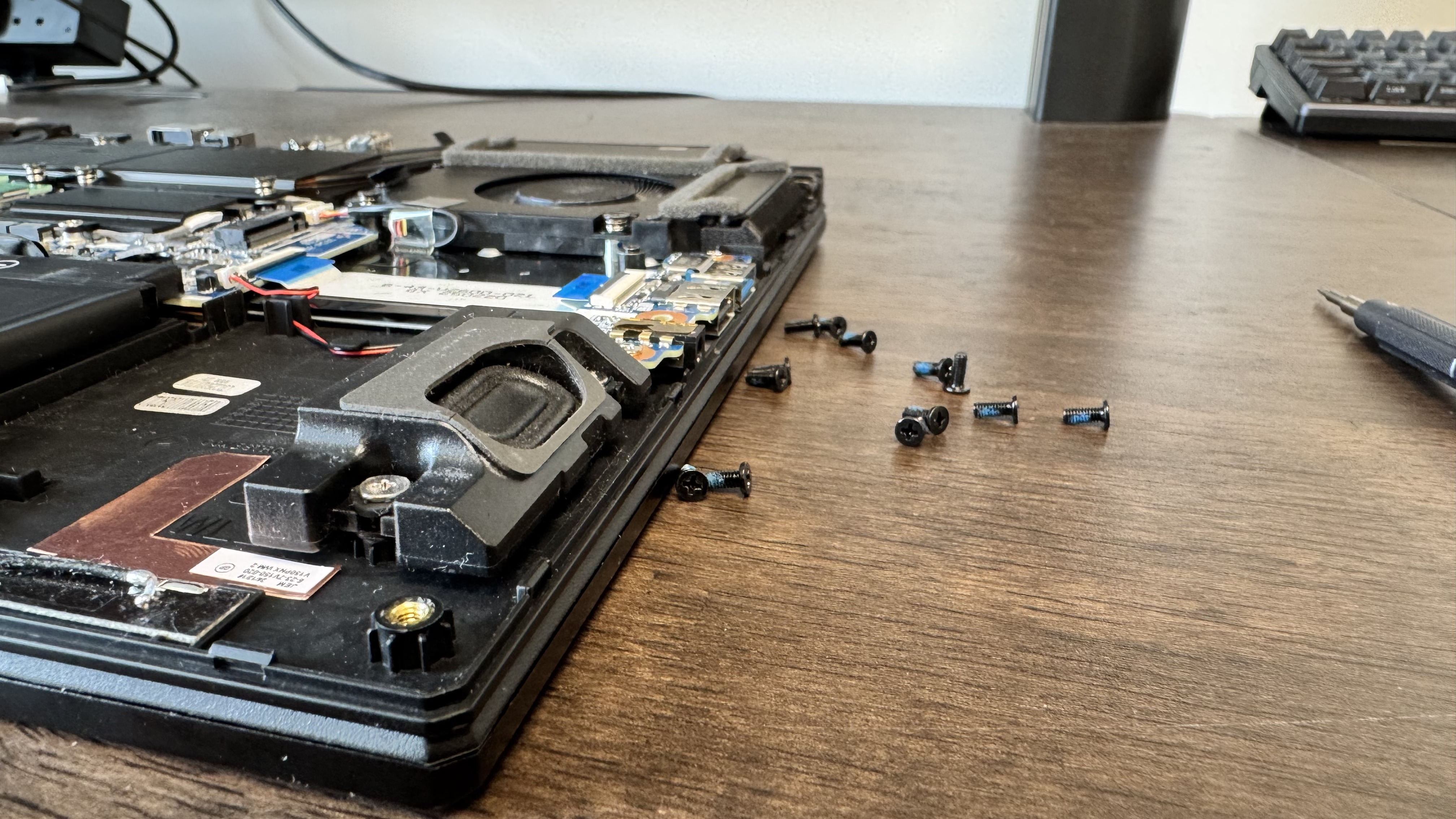
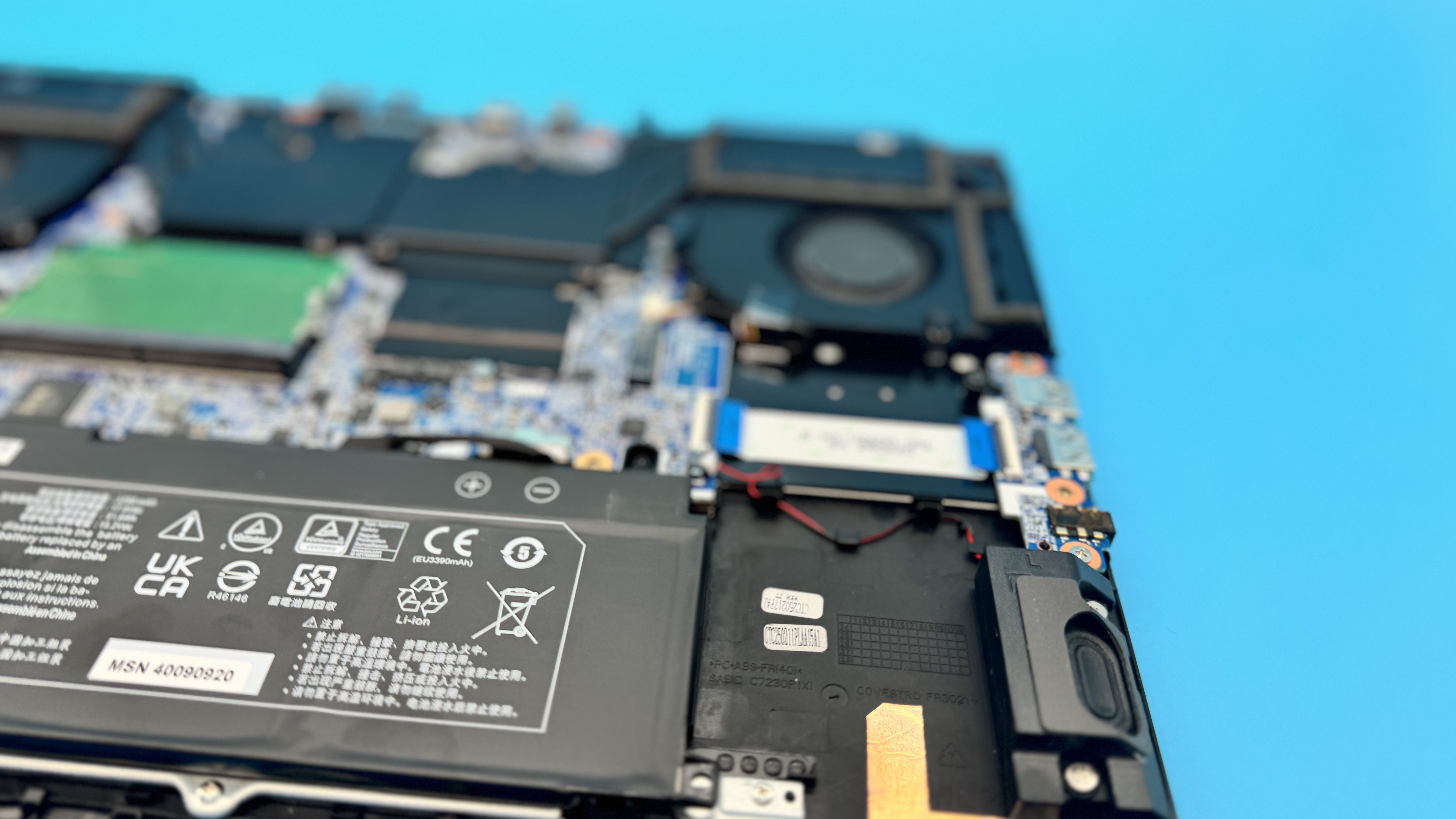
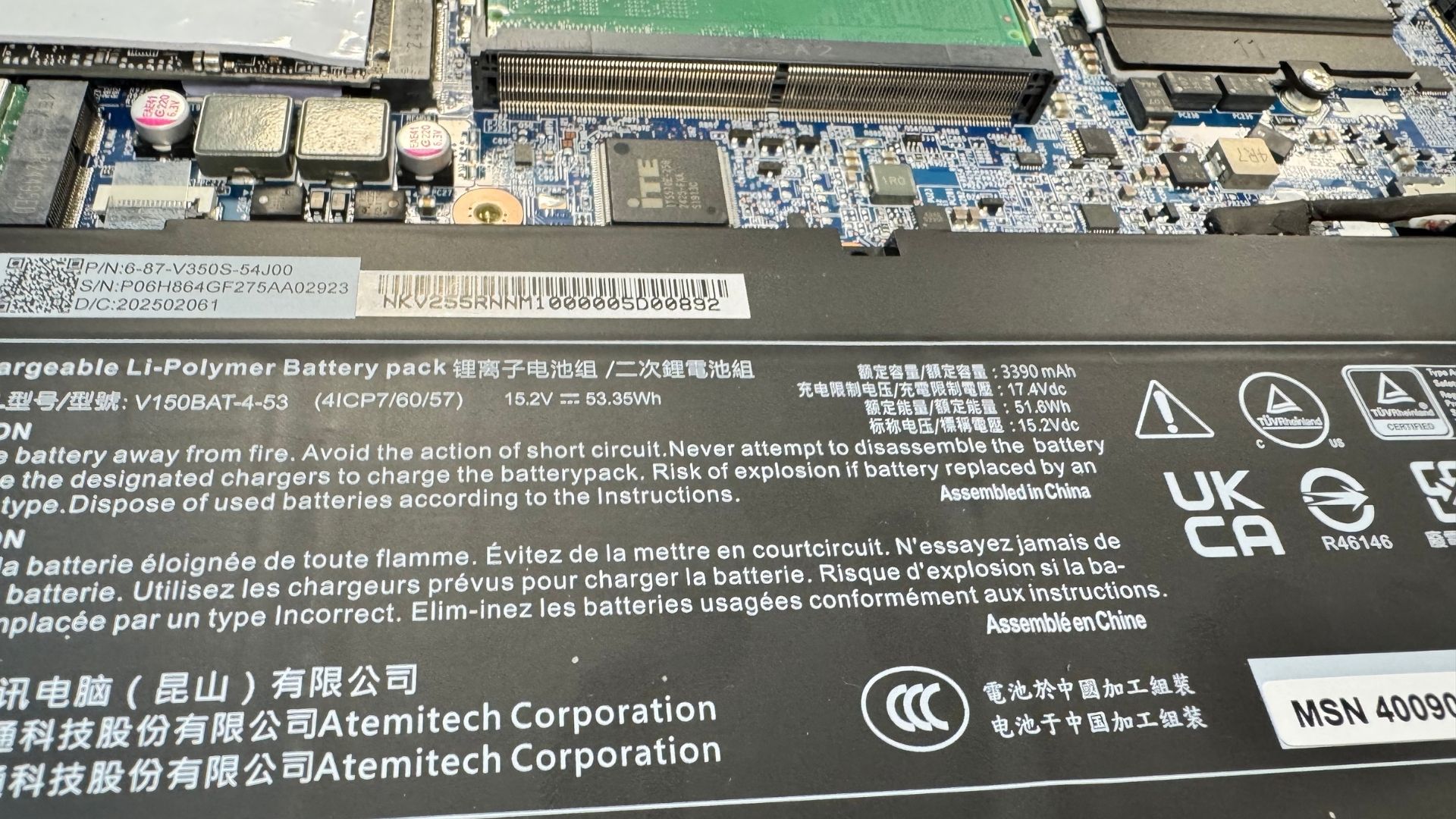
Plugging in the serial number will land you on a page where, under battery, the answer simply says 'hand'. Under components, you will find the proper battery stats, but I'd hazard a guess that someone looking for battery and receiving 'hand' may not search through the rest of the page for the answer.
Once I had the laptop open, I was pleasantly surprised with its upgradability, though. There's a one-sided PCIe 4 SSD slot spare, and the RAM can be popped out and replaced.
The spare SSD slot is missing a screw, and I'd probably slap a thermal pad on top given its closeness to the chassis, but this is only a few pounds' worth of accessories for that upgrade.
Though fairly superfluous to a good gaming laptop, webcam quality is just fine, and mic quality is actually surprisingly decent. The speakers are also just okay. They have decent loudness and depth, but definitely feel a tad tinny.
✅ This is your budget: Looking around the ever-growing RTX 50-series gaming laptop market, I couldn't find a single device that crammed this much into that price point
✅ You're in Europe: As of the time of writing, this gaming laptop is only available in Europe. Sorry America.
❌ You're picky about a keyboard: This laptop doesn't have a bad keyboard per se, but I find mistypes aren't out of the norm, I am not a huge fan of its spacing, and find it a bit mushy.
❌ You really want great battery life: Battery life is something the Blackwell series of cards thrives in, but this Medion performed, well, a little below the median in my testing. The lack of advertised battery capacity is to blame for that.
Two small speakers are positioned at the bottom and bottom left, which is fairly immersive for gaming, but not great for watching a show with your partner. I found the soundtrack of Deadzone Rogue to be missing nuance, but everything sounds reasonably clear.
Ultimately, despite annoyances, the main thing this little lappy has going for it is its price. If I had the cash for the Deputy 15 P1 and didn't want to hold out for an RTX 5070 Ti laptop or greater, I can't see a single better option out there right now.
It performs well, despite a bad battery. It has all the specs you might want for a decent remote 1080p gaming session, but the screen and keyboard are just okay. You can feel the budget of this device almost immediately, but with 4X MFG, I got all the way up to 160 fps average in Cyberpunk 2077, and I even managed to play it in a cafe without the fan noise or heat annoying those next to me.
For its price, I can't name a better laptop choice, but I think that's somewhat damning of the broader market. The 15 P1 isn't terrible in any way, but definitely lacking enough that I could see it being surpassed as more competition gets to the market.
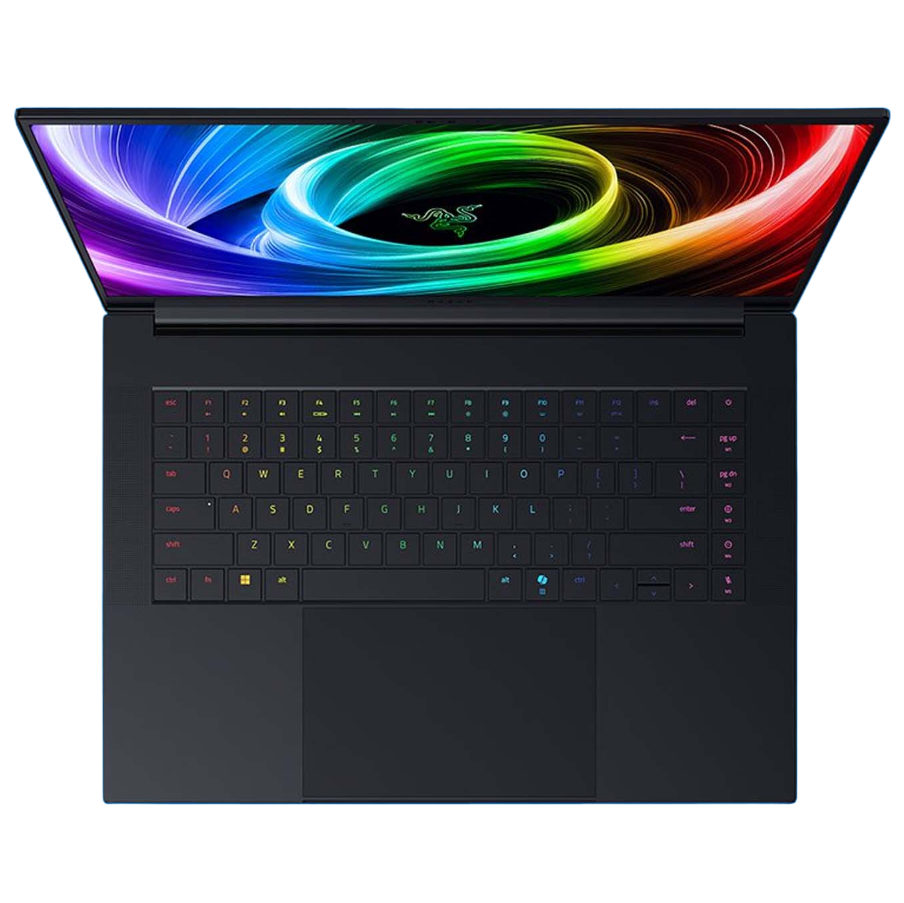
1. Best overall:
Razer Blade 16 (2025)
2. Best budget:
Lenovo LOQ 15 Gen 10
3. Best 14-inch:
Razer Blade 14 (2025)
4. Best mid-range:
MSI Vector 16 HX AI
5. Best high-performance:
Lenovo Legion Pro 7i Gen 10
6. Best 17-inch:
Gigabyte Aorus 17X
A perfectly reasonable mobile device for playing games on, that is dampened somewhat by a budget feel and inaccurate battery specs.

James is a more recent PC gaming convert, often admiring graphics cards, cases, and motherboards from afar. It was not until 2019, after just finishing a degree in law and media, that they decided to throw out the last few years of education, build their PC, and start writing about gaming instead. In that time, he has covered the latest doodads, contraptions, and gismos, and loved every second of it. Hey, it’s better than writing case briefs.
You must confirm your public display name before commenting
Please logout and then login again, you will then be prompted to enter your display name.
